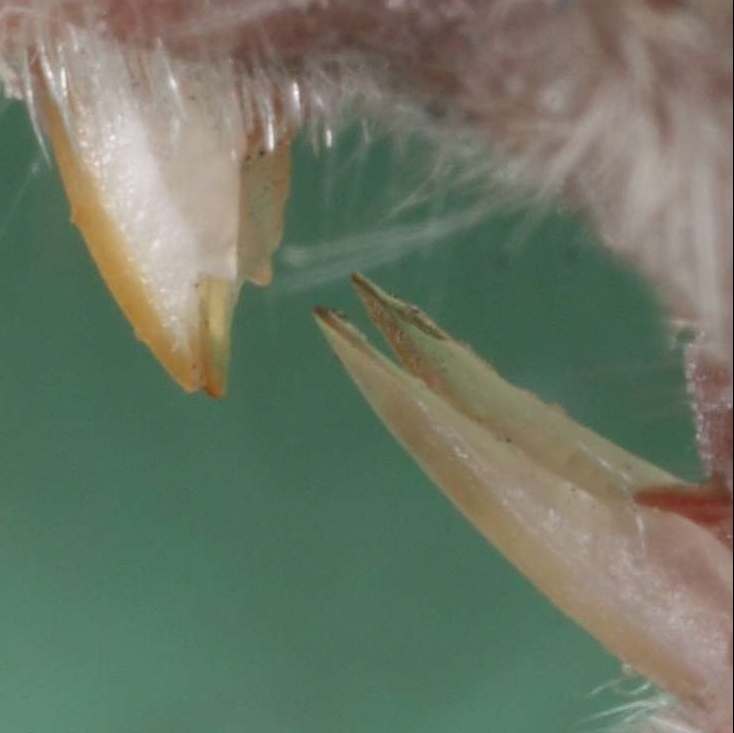|
Great Hopping Mouse
The great hopping mouse (''Notomys robustus'') is an extinct species of mammal native to Australia. It is known only from skulls found in owl pellets in the Flinders Ranges The Flinders Ranges are the largest mountain range in South Australia, which starts about north of Adelaide. The ranges stretch for over from Port Pirie to Lake Callabonna. The Adnyamathanha people are the Aboriginal group who have inhabit .... Some pellets also include bones of the introduced house mouse—indicating that it survived into historic times, possibly the second half of the 19th century. From the skull, it appears to have been relatively large (perhaps the size of ''N. amplus'' or a little more) and to have escaped collection by early 19th century naturalists by chance. From the location of the deposits it is assumed that it preferred clay rather than sandy soils. It is also commonly known as the broad-cheeked hopping mouse. References * * {{Taxonbar, from=Q574954 Notomys Mammals de ... [...More Info...] [...Related Items...] OR: [Wikipedia] [Google] [Baidu] |
Flinders Ranges
The Flinders Ranges are the largest mountain range in South Australia, which starts about north of Adelaide. The ranges stretch for over from Port Pirie to Lake Callabonna. The Adnyamathanha people are the Aboriginal group who have inhabited the range for tens of thousands of years. Its most well-known landmark is Wilpena Pound / Ikara, a formation that creates a natural amphitheatre covering and containing the range's highest peak, St Mary Peak (). The ranges include several national parks, the largest being the Ikara-Flinders Ranges National Park, as well as other protected areas. It is an area of great geological and palaeontological significance, and includes the oldest fossil evidence of animal life was discovered. The Ediacaran Period and Ediacaran biota take their name from the Ediacara Hills within the ranges. In August 2022, a nomination for the Flinders Ranges to be named a World Heritage Site was lodged. History The first humans to inhabit the Flinders ... [...More Info...] [...Related Items...] OR: [Wikipedia] [Google] [Baidu] |
House Mouse
The house mouse (''Mus musculus'') is a small mammal of the order Rodentia, characteristically having a pointed snout, large rounded ears, and a long and almost hairless tail. It is one of the most abundant species of the genus ''Mus''. Although a wild animal, the house mouse has benefited significantly from associating with human habitation to the point that truly wild populations are significantly less common than the semi-tame populations near human activity. The house mouse has been domesticated as the pet or fancy mouse, and as the laboratory mouse, which is one of the most important model organisms in biology and medicine. The complete mouse reference genome was sequenced in 2002. Characteristics House mice have an adult body length (nose to base of tail) of and a tail length of . The weight is typically . In the wild they vary in color from grey and light brown to black (individual hairs are actually agouti coloured), but domesticated fancy mice and laboratory mice ... [...More Info...] [...Related Items...] OR: [Wikipedia] [Google] [Baidu] |
Short-tailed Hopping Mouse
The short-tailed hopping mouse (''Notomys amplus'') is an extinct species of mouse from open stony (gibber) plains with desert grasses, low shrubs and sand ridges in the area around Charlotte Waters, near Alice Springs in Central Australia. It weighed 80 grams. The last record is from June 1896. Only two complete specimens were collected, probably from Aboriginal Australians. It was among the largest of all Australian hopping mice recorded in Australia; it was twice as heavy as any living species of hopping mice, although fossils suggest the extinct great hopping mouse may have been a similar size. The short-tailed hopping mouse was predominantly brown in colour, its tail probably being as long as its body. This species' decline was due to a number of factors, some of which were being hunted by predators such as foxes, cat The cat (''Felis catus'') is a domestic species of small carnivorous mammal. It is the only domesticated species in the family Felidae and is common ... [...More Info...] [...Related Items...] OR: [Wikipedia] [Google] [Baidu] |
Notomys
A hopping mouse is any of about ten different Australian native mice in the genus ''Notomys''. They are rodents, not marsupials, and their ancestors are thought to have arrived from Asia about 5 million years ago. All are brown or fawn, fading to pale grey or white underneath, have very long tails and, as the common name implies, well-developed hind legs. Half of the hopping mouse species have become extinct since European colonisation. The primary cause is probably predation from introduced foxes or cats, coupled with competition for food from introduced rabbits and hoofed mammals. A hopping mouse's primary diet is seeds. An Australian hopping mouse can concentrate urine to as high as 10,000 mOsm/L (10-20 times higher than a human). This allows it to survive in the desert without drinking water. Species * The spinifex hopping mouse (''Notomys alexis'') occurs throughout the central and western Australian arid zones, occupying both spinifex-covered sand flats and stabilised ... [...More Info...] [...Related Items...] OR: [Wikipedia] [Google] [Baidu] |
